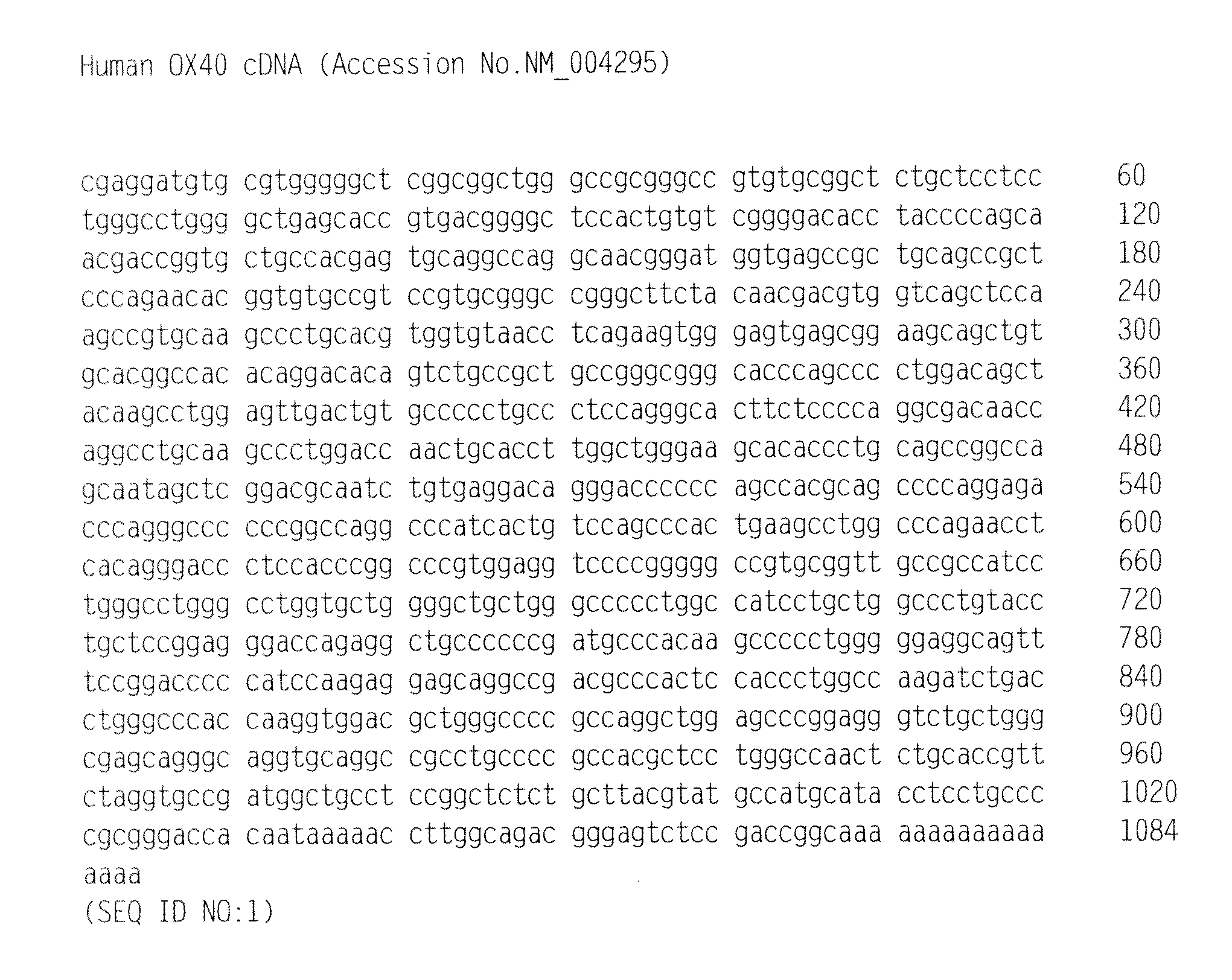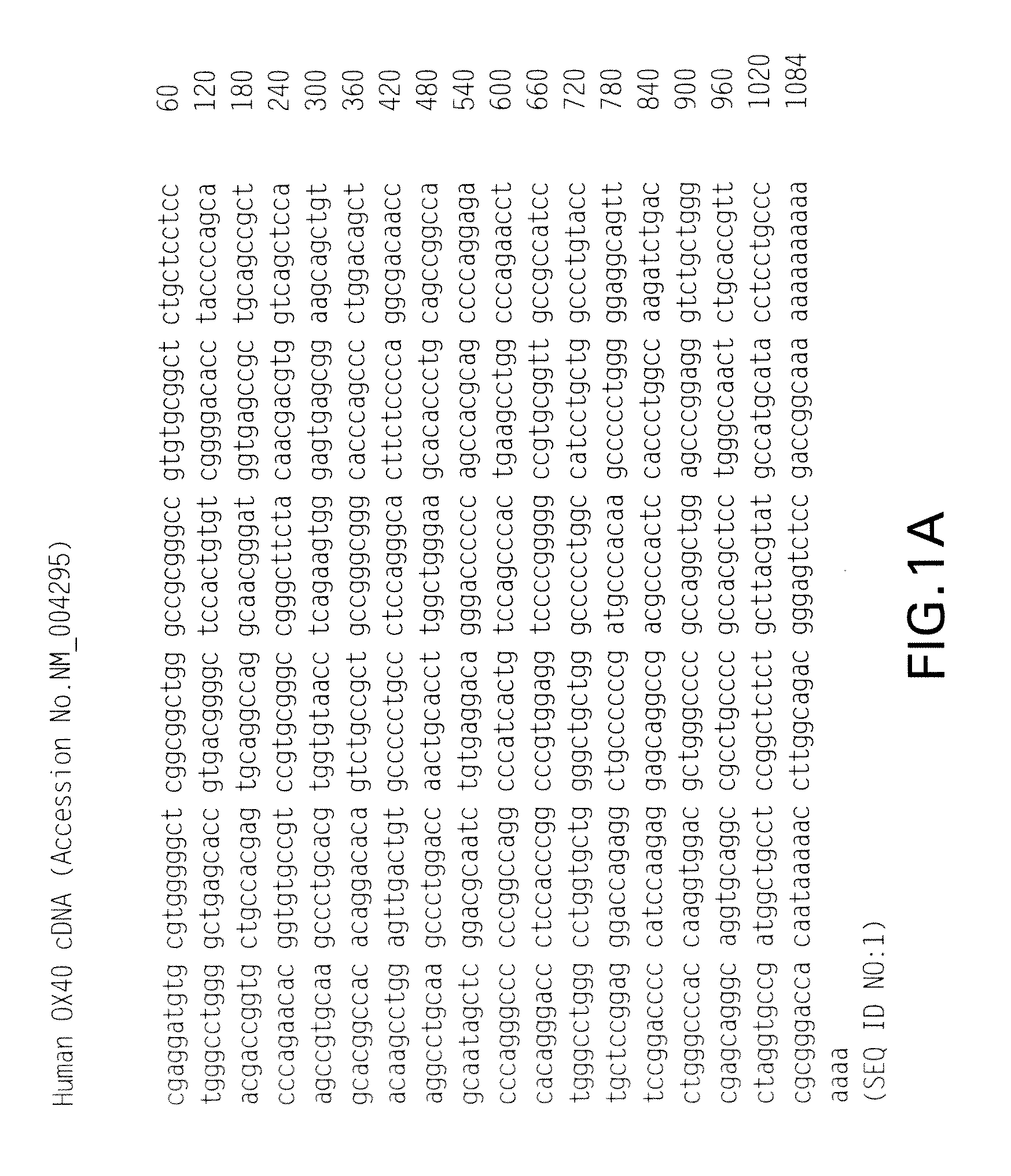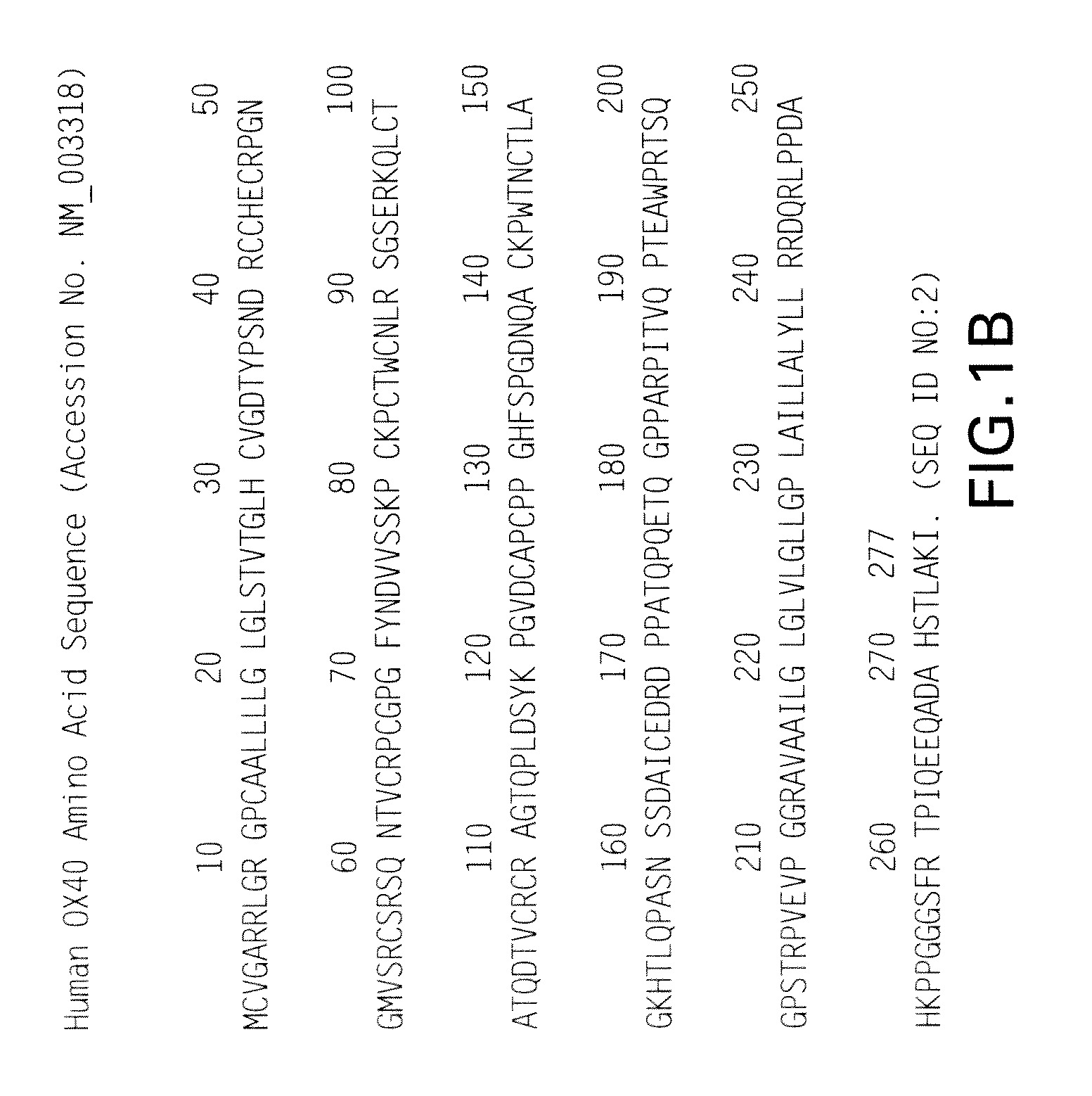Antagonist ox40 antibodies and their use in the treatment of inflammatory and autoimmune diseases
- Summary
- Abstract
- Description
- Claims
- Application Information
AI Technical Summary
Benefits of technology
Problems solved by technology
Method used
Image
Examples
example 1
Preparation of a Human OX40 / Fc Immunogen
[0263]Two forms of the OX40 receptor were used as immunogens to generate antagonist anti-OX40 antibodies of the present invention. The first was the soluble form of the human OX40 receptor expressed as fusion protein comprising human Fcγ1 and the extracellular domain encoded by nucleotide residues 105 to 627 of SEQ ID NO: 1. The second form was a cell-based immunogen comprising the full length OX40 expressed on the surface of stably transfected mouse fibroblast L-cells.
[0264]The soluble form of OX40 was cloned from an OX40 cDNA clone isolated from TCR-activated human CD4 T-cells. The two primers used to generate the OX40 cDNA clone were: (1) a sense primer having the nucleotide sequence cccaagcttaccccagcaacgaccggtgctgc (SEQ ID NO: 3) containing a HindIII site, and (2) an antisense primer having the nucleotide sequence cgcctcgaggacctccacgggccgggtgg (SEQ ID NO: 4) containing an XhoI site in frame with human Fcγ1. The resulting 540 bp PCR fragmen...
example 2
Generation of Anti-OX40 mAbs
[0267]Approximately 20 μg of the soluble OX40 / Fcγ1 immunogen was combined with Freund's adjuvant (1:1) and administered to two six-week-old A / J mice (Harlan, Houston, Tex.) in three subcutaneous injections followed by one intraperitoneal injection (without adjuvant) at 7-day intervals. Three days after the final injection, the splenocytes of immunized mice were fused with murine myeloma SP2 / 0 cells according to the method of Groth and Scheidegger (J Immunol Methods, 1980) as described below.
[0268]For the cell-based immunogen, 3×106 gamma-irradiated OX40-stably transfected L-cells were administered to six-week-old A / J mice (Harlan, Houston, Tex.) by three subcutaneous injections in PBS followed by one intraperitoneal injection at 7-day intervals. Three days after the final injection, the splenocytes of immunized mice were fused with murine myeloma SP2 / 0 cells as described below.
[0269]In the fusion leading to the generation of the anti-OX40 mAb, single cell...
example 3
Screening for Antagonist Anti-OX-40 Antibodies
[0270]The culture medium in which the hybridoma cells were grown was assayed for the production of monoclonal antibodies (mAbs) directed against OX40. The binding specificity of mAbs produced by the hybridoma cells was determined by three different approaches: FMAT, ELISA, and flow cytometry immunoassay.
[0271]A. FMAT Screening
[0272]Using the FMAT approach, 220 hybridoma cell lines secreting mouse anti-human OX40 mAbs were identified by their strong reactivity with OX40-transiently transfected L-cells, but not with mock untransfected L-cells. Anti-OX40 hybridoma supernatants were screened using FMAT employing a macroconfocal scanning platform to image and quantify both cell number and fluorescence in a 96-well microtiter plate format. L-cells expressing OX40 antigen were incubated with 5 μl of anti-OX40 hybridoma supernatant and fluorescently-labeled with Cy-5-conjugated goat anti-mouse IgG-Fcγ antibodies (Jackson Laboratories, PA) that w...
PUM
| Property | Measurement | Unit |
|---|---|---|
| Composition | aaaaa | aaaaa |
Abstract
Description
Claims
Application Information
 Login to View More
Login to View More - R&D
- Intellectual Property
- Life Sciences
- Materials
- Tech Scout
- Unparalleled Data Quality
- Higher Quality Content
- 60% Fewer Hallucinations
Browse by: Latest US Patents, China's latest patents, Technical Efficacy Thesaurus, Application Domain, Technology Topic, Popular Technical Reports.
© 2025 PatSnap. All rights reserved.Legal|Privacy policy|Modern Slavery Act Transparency Statement|Sitemap|About US| Contact US: help@patsnap.com



